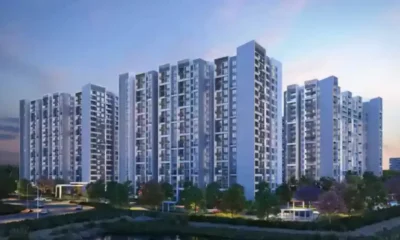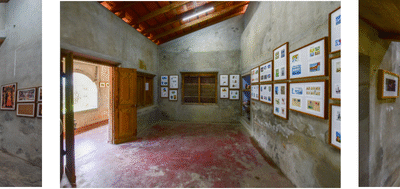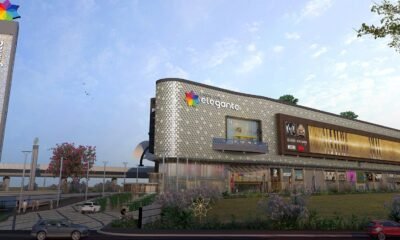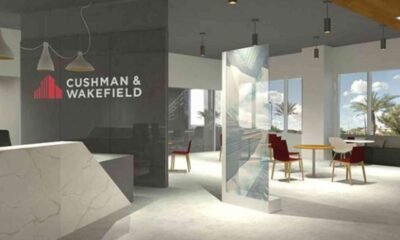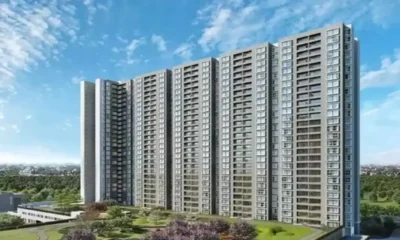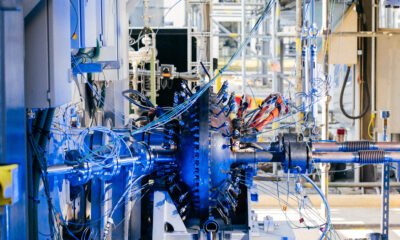News
Infrastructure and Urban Development Catalyse NCR Property Market
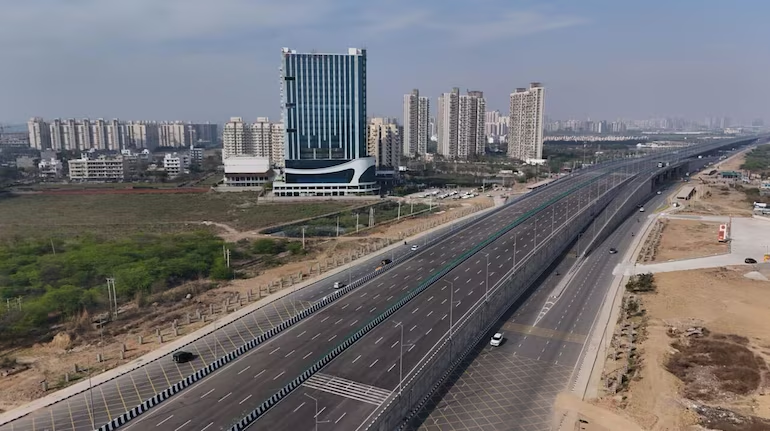
New Delhi, October 30, 2025: The NCR region is transforming like never before, one that goes far beyond the traditional drivers of housing demand. A new story is being written on the back of large-scale infrastructure upgrades and urban development initiatives that are reimagining how and where people live, work, and invest. Expressways, metro corridors, airports, and emerging urban clusters are not just connecting destinations but rewriting the very idea of accessibility and liveability. Together, connectivity, urban expansion, and quality of life have become the new triad shaping real estate choices.
From Gurugram and Noida’s established corridors to the fast-rising micro-markets of NCR, infrastructure has become the true catalyst of NCR’s property surge—unlocking fresh growth, bridging distances, and setting new benchmarks for value and aspiration.
According to a report by Anarock, Delhi-NCR’s primary housing market saw an average increase of 24 per cent annually during the July-September period due to better demand, especially for luxury homes. The data showed that the average price of residential properties across Delhi-NCR at INR 8,900 per square foot during July-September from Rs 7,200 per square foot in the year-ago period. Gurugram, Noida, Greater Noida, Delhi, and Ghaziabad are major markets in the region.
At the heart of NCR’s growth story lies an unprecedented wave of connectivity and urban transformation. If price growth is the story, infrastructure is the headline.
Delhi NCR’s transformation is visible through some of India’s most ambitious projects, from the Dwarka Expressway in Gurugram to the Noida–Greater Noida Expressway, which are redrawing the region’s map, making once-distant locations more accessible and desirable.

Prateek Tiwari, Managing Director, Prateek Group, says, “When infrastructure catches up, everything else falls into place. In locations like Noida-Greater Noida and Siddharth Vihar, we’re seeing that buyers are no longer just buying a home—they’re buying access, convenience, and future-proofing. With the soon-to-be-operational Noida International Airport, metro expansions underway, and improved last-mile connectivity, locations that were once fringe are now front-door to opportunity. Hence, we’re designing our projects aligned with these developments, adding to the growth of the NCR market.”
The upcoming Regional Rapid Transit System (RRTS) and expanding metro networks are further bridging the mobility gap, while the Noida International Airport at Jewar is poised to be a game-changer, unlocking immense potential along the Yamuna Expressway corridor. Parallelly, the emergence of planned urban clusters, integrated townships, and green, self-sustained neighbourhoods marks a decisive shift from congested city cores to holistic, live-work-play ecosystems. With stronger last-mile connectivity, improved amenities, and rising commercial traction, infrastructure has become the invisible hand shaping NCR’s real estate renaissance.

Sakshee Katiyal, Chairperson, Home & Soul, says, “When we evaluate a location today, infrastructure is the first filter and a primary value-creator. Along the corridors like the Yamuna Expressway, we are seeing the trifecta: expressway connectivity, Noida International Airport in Jewar and large-scale real estate developments. That means end-users can enjoy the benefits of connectivity, amenities and future scalability; and investors see a more certain upside. As developers, we’re adapting to this evolution by improving front-loaded infrastructure in our projects, ensuring the commute-time reduction is as real as the amenities promised. In markets like this, infrastructure isn’t just an add-on; it is the story.”
Moreover, infrastructure is the bridge between potential and performance. Every expressway, metro corridor, and airport expansion across NCR has played a direct role in shrinking distances and converting once “fringe” areas into prime investment zones. The operationalisation of the Dwarka Expressway and UER-II, for instance, has already cut commute times between Delhi and Gurugram’s business districts, making these corridors immensely attractive for both residents and corporates.

Ashwani Kumar, Pyramid Infratech, says, “The Dwarka Expressway corridor is one of the clearest examples of infrastructure rewriting the property map. Launches here are commanding a premium not just for views or layouts, but for the conviction that buyers’ commute will be 10-15 minutes shorter, connectivity to Delhi and Gurugram will be seamless, and lifestyle will be upgraded. That shift in expectation is real and measurable, and developers who build around that narrative are winning the market.”

Jashanpreet Singh Sethi, Senior VP & Head Sales, SPJ True Realtyy, adds: “In Gurugram, the established corridors are well-known, but what excites us are the untapped micro-markets, where infrastructure deliverables are imminent and the value appreciation window is still wide open. We’re witnessing a sharp uptick in demand for premium retail spaces, housing units, and mixed-use developments in Old Gurgaon, as this area boasts habitation in high numbers and families with high purchasing power. Besides, the area remains the business focal point, now attracting global brands, further validating the evolving consumer ecosystem here. For investors, infrastructure-led markets promise not just enhanced access and lifestyle appeal, but sustained rental demand and strong long-term capital appreciation.”
What’s equally noteworthy is how this infrastructure boom is extending its influence beyond NCR’s core, reaching Tier-II cities like Dehradun through developments such as the Delhi–Dehradun Expressway. By cutting travel time and enhancing regional connectivity, such projects are making smaller cities more accessible, investable, and lifestyle-friendly. As a result, demand for second homes, hospitality, and mixed-use real estate in these satellite destinations is growing—signalling that NCR’s infrastructure-led growth story is now radiating well into the wider northern belt.

Aniket Sethi, Director, Excentia Infra, says, “While much of the focus is on NCR’s established urban pockets, the spill-over effect to destinations like Dehradun via the Delhi-Dehradun Expressway is significant. For Dehradun, we’re seeing that improved access from Delhi is changing how people value second-homes, retirement homes and lifestyle living. When the expressway reduces travel time to Delhi to 2.5 hours, the address changes meaningfully. That ripples back into NCR: investors and residents recognise that infrastructure-led zones beyond the immediate metro-belt will be part of the growth story as well.”
Infrastructure and urban development remain the bedrock of its real estate success across cities. For homebuyers and investors, the mantra is clear: focus on locations where infrastructure is visible, imminent, and transformative.

 News3 days ago
News3 days agoIshara Art Foundation to Present Group Exhibition ‘Amphibian Aesthetics’ at Ishara House in Kochi

 News4 weeks ago
News4 weeks agoUnity Group Launches Unity One Elegante Mall at Netaji Subhash Place, Delhi

 News1 week ago
News1 week agoMumbai Returns to Pre-Pandemic Investment Levels, Surpasses $1 Billion 4th Consecutive Year: Cushman & Wakefield

 News4 days ago
News4 days agoK2 Infragen Delivers Robust H1 with 76.5% Revenue Growth, 70% Profit Jump

 News1 week ago
News1 week agoGurugram Premium Segment Drives Projected Rs 6.65 Lakh Crore Market: ANAROCK

 News1 week ago
News1 week agoGurugram’s Growth Corridors: Micro-Markets Powering the City’s Real Estate Future

 News1 week ago
News1 week agoAdani Cement and Coolbrook to Deploy World’s First Commercial Rotodynamic Heater for Cement Decarbonisation

 News1 week ago
News1 week agoTIL Ltd Reports Q2 FY26 Results with Enhanced Order Book Position, Strong Execution Momentum





